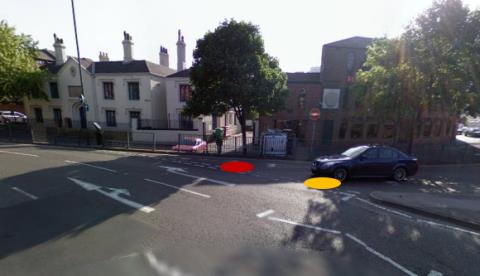I saw someone posted this question on one of the forums:
If a pupil is on test and they are unable to exit a junction because the road is just too busy, and nobody lets them out, how long will the examiner allow them to stay there and will they intervene at some point…if so, how?
All the answers centre upon the premise that it really is impossible to get out, and that any attempt to go would be wrong.
They’re right, of course. If you can’t go, you can’t go. Simple as that. But the reality is that there is always a gap or someone prepared to give way in circumstances even remotely approaching the one described here.
On top of that, examiners are testing new drivers – not Lewis Hamilton – so they are likely to offer a little advice without it affecting the outcome of the test.
The instructor should make it clear to pupils going to test that they should not take risks if they are held up because, as I said above, if you can’t go, you can’t go. So don’t try.
EDIT 29/11/2010: As an update to this, I had a pupil fail her test a few weeks ago for pulling out of a junction when a car was coming. This is the junction in question.

This is on one of the Nottingham City Centre routes. The small slip road has two lanes at the give way line (red and yellow dots). You can just see from the picture that the slip road is at an angle and joins the main one-way road (A60) on a slight bend. This means that if you are in the lane marked by the red dot and steer too sharply in line with the kerb to the right, your vision of traffic coming from your left is impaired.
My pupil did exactly that, and pulled out when a car was coming. The examiner had to use the dual controls to stop her.
You’d think it was a clear-cut situtation. But my pupil has done nothing but go on about how she couldn’t have done anything else. I’m not making this up, but her argument is:
But if I couldn’t see, what choice did I have but to go? The examiner’s head was in the way. I didn’t want to get a fault for hesitating.
She will not accept that she was wrong, and is trying to find convoluted reasons to support her case.
My explanation to her is simple:
You can always see if you try hard enough. If you can’t see, you don’t go. It’s that simple. If the examiners head is in the way, ask him to move it. Just going when you can’t see is like playing Russian Roulette.
One lesson to be learned is that you don’t put yourself in that situation in the first place. Plan ahead.
And another one is that if it’s a choice between a minor hesitation fault and a serious collision situation, you take the safer option. You’ve got kids: are you going to put them at risk when you’re driving around with them screaming in the back?